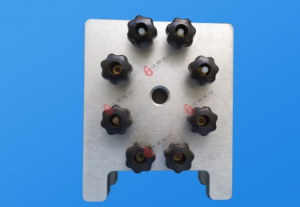Electrochemical synthesis uses electrical energy to drive chemical changes. Using electricity instead of toxic and expensive chemicals, cleaner and cheaper synthesis allows chemical synthesis to better improve production efficiency and reduce costs.
Electrochemical and continuous electrochemical reactions.
Electrosynthesis is carried out by making the current pass through the reagent solution and leads to the oxidation and reduction of organic molecules by adding or removing electrons. Electrosynthesis has many advantages: active substances can be formed without dangerous oxidants and reductants; the reaction is usually high.
Selectively, electrochemical reactions can be carried out under mild conditions. Electrochemistry directly defines electron energy through overpotential, which helps to avoid the formation of unwanted by-products. According to the principle of “green chemistry”, electrochemistry has high atomic economy and low waste.
Electrochemistry is not a conventional technology in organic chemistry laboratories because the equipment is not easy to use and batch electrosynthesis requires high concentrations of electrolytes. The combination of electrochemistry and continuous flow provides a powerful combination. Since the reaction product is removed from the reactor and mixing with the unreacted starting material is not allowed, the requirement for electrolyte can be eliminated and the reaction has improved selectivity.
WH-LAB is an experimental electrochemical reactor which can be used to carry out various reduction / oxidation reactions in continuous flow using the principle of green chemistry. There are a variety of electrodes to choose from, such as graphite, platinum, titanium, copper, foamed nickel and so on. WH-LAB microchannel electrochemical reactor has the characteristics of close electrode distance and continuous reaction. The characteristics of close electrode distance can bring the advantages of low voltage, small amount of electrolyte or no electrolyte; continuous reaction can bring the advantage of non-reflux, so as to achieve non-excessive redox and improve the yield of the product. In addition, the microchannel electrochemical reactor has the characteristics of accurate temperature control and fast mass transfer. Under the condition of minimal electrode distance, a special redox coupling reaction can be achieved.
Application of Electrochemistry in flow Chemistry.
Electrochemistry can realize the unique activation of reagents, thus realizing the selectivity and conversion that can not be achieved by other technologies. The electron transfer-driven reaction and transformation means that electrochemistry is a surface phenomenon, and the reaction can be optimized when the surface area / volume ratio is high.
Electrochemistry in the flow means that the substrate can flow between the two electrodes, and the ability to adjust the flow rate will adjust the amount of time the substrate is exposed to the electron transfer process. Compared with the typical batch processing method, the advantage of this method means that we can maximize the potential of surface phenomena, that is, to reduce the distance between electrodes to achieve more efficient electron transmission. In this way, electrochemistry in the flow greatly allows for better control and selectivity of the reaction.

Advantages of Electrochemistry in flow Chemistry.
In addition to unique reactions and transformations that cannot be achieved by other technologies, electrochemistry can also achieve:
1. Reduce the use of toxic and harmful oxidants.
2. The production of reactive intermediates is an ideal choice for multi-step synthesis.
3. Oxidative synthesis of rapid oxidation and reduction drug metabolites.
4. Oxidative synthesis of drug metabolites.
In an electrochemical reaction, the reaction is driven by the number of electrons that can be used to activate the molecule to produce the desired reaction.
Electrochemical reactions in flow mean that you can flow continuously through the substrate between electrodes during electron transfer. The ability to adjust the flow rate means that the residence time of electrochemical reactions is strictly controlled, and the residence time usually determines the distribution of products and the control of the formation of by-products.
Continuous flow operation means that you can get a larger number of electrochemical reaction substrates, and you can get more products each time. When the fluid flows in the channel between the two electrodes, reducing the distance between the electrodes can better control the number of electrons transferred to the substrate, resulting in better control and selectivity of the reaction. this means that you can distribute the product more accurately and you will get a higher product output.
The core flow principle means that temperature control is also significantly improved during electrochemical reactions because smaller channels promote more efficient heat transfer and therefore range variables can be controlled in a single electrochemical reaction to achieve the desired conditions. This means that the electrochemical reaction in the flow is much faster than the similar reaction in the batch process, which usually takes several hours to complete, usually in a mobile electrochemical reactor within a few minutes, and because of the amount of control provided during operation, the reaction can also produce more evenly distributed products.
All these factors mean that mobile electrochemical reactions occur much faster than similar reactions in batch processes, usually taking a few minutes or more, and the resulting products are more evenly distributed due to the amount of control.
